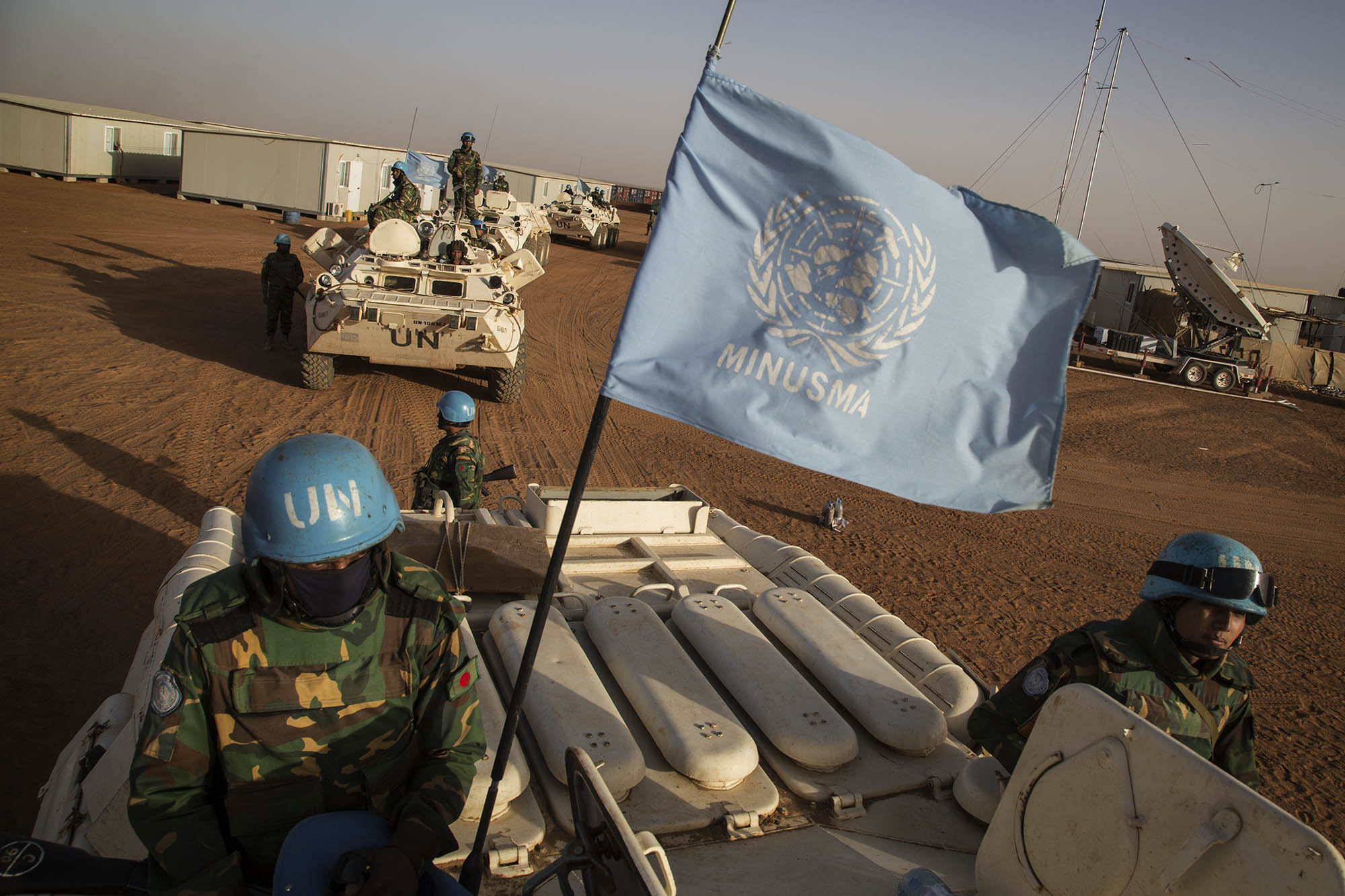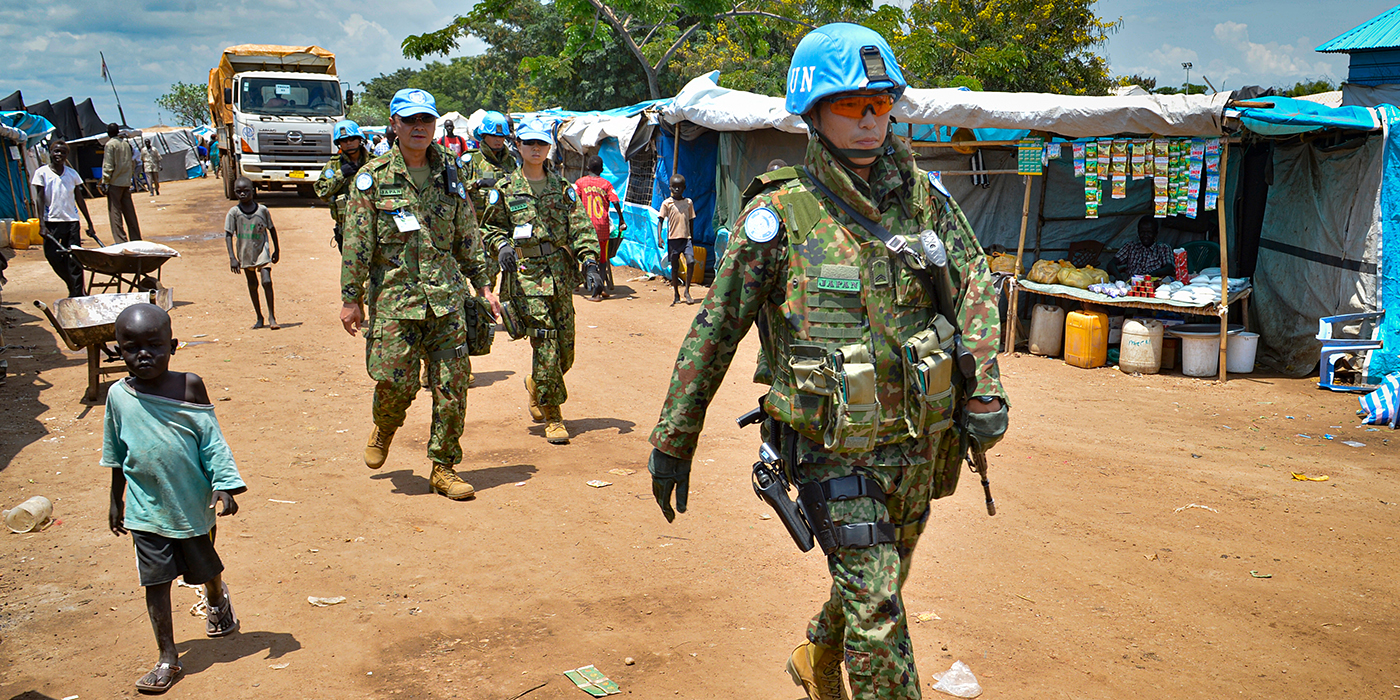Deployment Statistics
The United Nations deploys peacekeeping troops to various regions worldwide to maintain international peace and security. The number of troops deployed has fluctuated over the years, with significant increases and decreases depending on the global security landscape.
Regional Deployment
As of 2023, the UN has deployed over 90,000 troops worldwide, with the majority deployed in Africa (60%). The Middle East and North Africa account for 20% of the deployments, while Asia and the Pacific, Europe, and the Americas make up the remaining 20%.
Country-Specific Deployments
The largest UN peacekeeping mission is in the Democratic Republic of Congo (DRC), with over 18,000 troops deployed. Other significant deployments include South Sudan (16,000 troops), Mali (15,000 troops), the Central African Republic (13,000 troops), and Lebanon (10,000 troops).
Trends in Deployment
Over the past decade, there has been a steady increase in the number of UN peacekeeping troops deployed worldwide. This increase has been driven by the growing number of conflicts and the increasing complexity of peacekeeping operations.
In recent years, there has been a shift towards deploying more troops to conflict-prone regions in Africa and the Middle East. This shift reflects the changing nature of global conflicts, with more conflicts occurring in these regions.
Mission Objectives

Un troops deployed – United Nations peacekeeping missions are deployed to conflict-affected areas with the primary objective of maintaining international peace and security. These missions are guided by the principles of impartiality, consent of the parties involved, and the non-use of force except in self-defense or as authorized by the Security Council.
The specific mandates and goals of each peacekeeping operation vary depending on the nature of the conflict and the needs of the host country. However, some common objectives include:
Protection of Civilians
- Protecting civilians from violence, abuse, and exploitation.
- Creating a secure environment for humanitarian assistance and development activities.
- Supporting the restoration of law and order.
Conflict Resolution
- Mediating between conflicting parties and facilitating dialogue.
- Monitoring ceasefires and peace agreements.
- Supporting the disarmament, demobilization, and reintegration of combatants.
Humanitarian Assistance
- Providing food, water, shelter, and medical care to those in need.
- Supporting the delivery of essential services, such as education and healthcare.
- Promoting human rights and the rule of law.
Troop Composition: Un Troops Deployed
UN peacekeeping forces are composed of military and police personnel from various countries around the world. The composition of these forces is determined by a number of factors, including the political considerations of the Security Council, the availability of troops, and the specific requirements of the mission.
The majority of UN peacekeeping troops are from developing countries, as these countries are often more willing to contribute troops to peacekeeping missions than developed countries. However, developed countries also contribute a significant number of troops to peacekeeping missions, and they often provide specialized units, such as engineering and medical units.
The ranks of UN peacekeeping troops vary depending on the mission and the country contributing the troops. However, the majority of troops are non-commissioned officers or enlisted personnel. Officers are typically responsible for commanding troops and overseeing the mission, while non-commissioned officers and enlisted personnel are responsible for carrying out the mission’s tasks.
UN peacekeeping troops come from a variety of specialties, including infantry, artillery, engineering, and medical. The specific specialties of the troops deployed to a particular mission will depend on the mission’s requirements.
Selection and Deployment of Troops
The selection and deployment of UN peacekeeping troops is a complex process that involves a number of factors, including the political considerations of the Security Council, the availability of troops, and the specific requirements of the mission.
The Security Council is responsible for authorizing all UN peacekeeping missions. When the Security Council authorizes a mission, it also decides which countries will contribute troops to the mission. The Security Council takes into account a number of factors when making this decision, including the political considerations of the mission, the availability of troops, and the specific requirements of the mission.
The availability of troops is a major factor in the selection and deployment of UN peacekeeping troops. The UN does not have its own standing army, so it must rely on member states to contribute troops to peacekeeping missions. The availability of troops can vary depending on a number of factors, including the political climate, the level of military preparedness, and the availability of resources.
The specific requirements of the mission are also a major factor in the selection and deployment of UN peacekeeping troops. The UN must ensure that the troops deployed to a particular mission have the necessary skills and equipment to carry out the mission’s tasks.
Challenges and Risks
UN peacekeeping missions often operate in volatile and dangerous environments, posing significant challenges and risks to the safety and well-being of troops.
One of the primary challenges is armed conflict. Troops may be deployed to areas where active fighting is ongoing, exposing them to gunfire, explosions, and other hazards. To mitigate this risk, UN forces implement strict security measures, including patrolling, establishing checkpoints, and maintaining a constant state of readiness.
Disease
Another major challenge is disease. Peacekeepers may be exposed to unfamiliar diseases and infections in the regions where they are deployed. To protect against this risk, troops are provided with vaccinations, medical supplies, and access to healthcare facilities. Regular medical checkups and preventive measures are also implemented to minimize the spread of disease.
Political Instability
Political instability is another significant risk faced by UN troops. In some cases, peacekeeping missions may be deployed to areas where the political situation is volatile and unpredictable. This can lead to protests, civil unrest, and even armed conflict. To address this challenge, UN forces work closely with local authorities and community leaders to promote dialogue, build trust, and maintain stability.
Impact on Local Populations

The presence of UN peacekeeping missions can have a significant impact on local populations, both positive and negative.
On the positive side, UN troops can provide much-needed security in areas that have been plagued by conflict. They can also help to facilitate the delivery of humanitarian aid and support peacebuilding efforts. In some cases, UN troops have even helped to create conditions that have allowed refugees and internally displaced persons to return to their homes.
However, there are also some negative consequences that can arise from the presence of UN peacekeeping missions. For example, UN troops can sometimes be accused of human rights abuses, and their presence can also lead to increased tensions between local communities and the government. In some cases, UN peacekeeping missions have even been accused of making the situation worse in the countries where they are deployed.
Overall, the impact of UN peacekeeping missions on local populations is complex and varied. There are both positive and negative consequences to consider, and the overall impact will depend on a number of factors, including the specific circumstances of the mission and the behavior of the troops involved.
Security
One of the most important roles that UN peacekeeping missions play is to provide security in areas that have been affected by conflict. UN troops can help to protect civilians from violence, and they can also help to create a stable environment that is conducive to peacebuilding.
In some cases, UN troops have been able to help to reduce violence and create a more stable environment. For example, in the Democratic Republic of the Congo, UN troops have helped to reduce the number of civilian deaths by more than 50%.
However, UN troops can also be accused of human rights abuses. For example, in the Central African Republic, UN troops have been accused of sexual abuse and other forms of violence against civilians.
Humanitarian Aid
UN peacekeeping missions can also play a vital role in facilitating the delivery of humanitarian aid. UN troops can help to protect aid workers and ensure that aid is delivered to those who need it most.
In some cases, UN troops have been able to help to improve the lives of civilians by providing them with food, water, and other essential supplies. For example, in South Sudan, UN troops have helped to provide food to more than 1 million people.
However, UN troops can also be accused of blocking the delivery of humanitarian aid. For example, in Syria, UN troops have been accused of preventing aid from reaching civilians in rebel-held areas.
Peacebuilding
UN peacekeeping missions can also support peacebuilding efforts by helping to create conditions that are conducive to peace. UN troops can help to build trust between different communities and they can also help to promote dialogue and reconciliation.
In some cases, UN troops have been able to help to create a more stable environment and promote peace. For example, in Liberia, UN troops have helped to create a more stable environment and promote peace by providing security and supporting peacebuilding efforts.
However, UN troops can also be accused of making the situation worse in the countries where they are deployed. For example, in Somalia, UN troops have been accused of making the situation worse by supporting the government and by failing to protect civilians from violence.
Funding and Resources

UN peacekeeping missions are funded through assessed contributions from member states and voluntary donations. Assessed contributions are based on a formula that takes into account a country’s GDP, population, and other factors. Voluntary donations can come from governments, organizations, or individuals.
Securing adequate resources for peacekeeping operations can be challenging. Member states often have competing priorities for their budgets, and voluntary donations can be unpredictable. This can lead to funding shortfalls, which can impact the effectiveness of peacekeeping missions.
Challenges and Constraints
* Competing priorities: Member states often have other priorities for their budgets, such as education, healthcare, and defense. This can make it difficult to secure funding for peacekeeping operations.
* Unpredictable voluntary donations: Voluntary donations can be unpredictable, making it difficult to plan for the long-term.
* Earmarked contributions: Some member states earmark their contributions for specific peacekeeping missions. This can make it difficult to fund missions that are not considered priorities by all member states.
* Exchange rate fluctuations: Exchange rate fluctuations can impact the value of assessed contributions and voluntary donations. This can make it difficult to budget for peacekeeping operations.
Case Studies
UN peacekeeping missions have been deployed to various conflict zones around the world, with varying degrees of success. Here are a few case studies that highlight the challenges, successes, and lessons learned from specific missions:
United Nations Mission in the Democratic Republic of the Congo (MONUC), Un troops deployed
MONUC was established in 1999 to monitor the implementation of the Lusaka Ceasefire Agreement and to protect civilians during the Second Congo War. The mission faced numerous challenges, including the vastness of the country, the presence of multiple armed groups, and the lack of infrastructure. Despite these challenges, MONUC played a significant role in reducing violence and facilitating the peace process.
United Nations Stabilization Mission in Haiti (MINUSTAH)
MINUSTAH was established in 2004 to help restore stability and security in Haiti after the overthrow of President Jean-Bertrand Aristide. The mission faced challenges such as political instability, gang violence, and natural disasters. MINUSTAH’s presence contributed to a reduction in violence and the establishment of a more stable political environment.
United Nations Mission in South Sudan (UNMISS)
UNMISS was established in 2011 to support the implementation of the Comprehensive Peace Agreement between the government of South Sudan and the Sudan People’s Liberation Movement/Army. The mission has faced challenges such as the ongoing conflict between the government and rebel groups, the presence of armed militias, and the lack of infrastructure. Despite these challenges, UNMISS has played a significant role in protecting civilians and facilitating the delivery of humanitarian assistance.